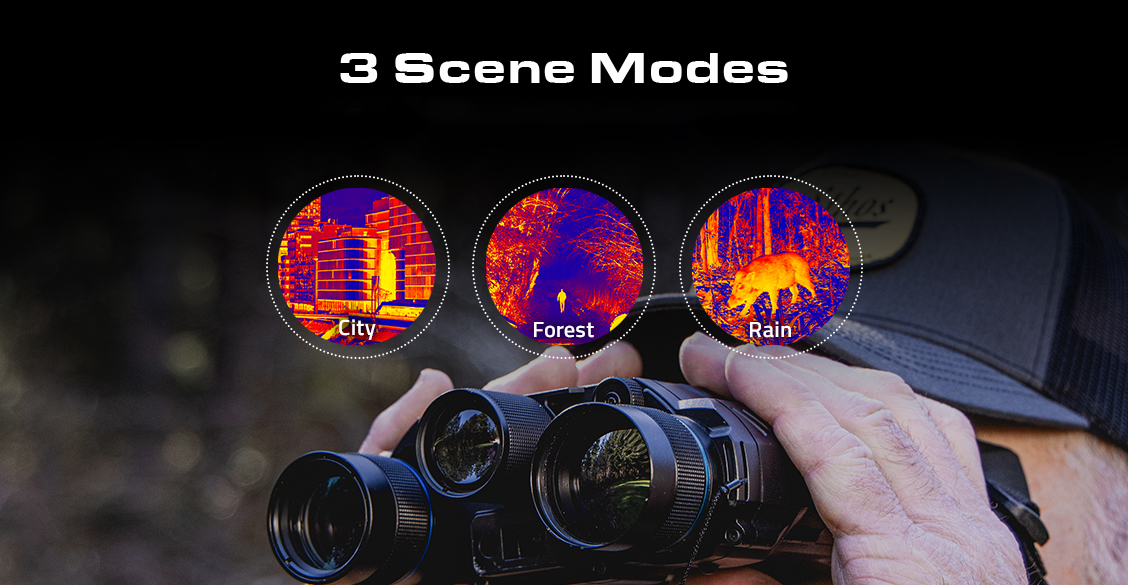
Oct 11
2024
Oct 11 2024
Thermal imaging devices have revolutionized outdoor observation, from wildlife tracking to security surveillance. Their ability to detect heat signatures regardless of lighting conditions makes them invaluable. However, not all environments are alike, necessitating the use of tailored scene modes. In this post, we'll explore the key scene modes—City, Rain, and Forest—that optimize thermal imaging for diverse outdoor settings, enhancing your observation experience.
1. Why We Need 3 Scene Modes?
We need three scene modes (City, Rain, and Forest) because different environments pose unique challenges for thermal imaging devices. Each mode is specifically designed to optimize the device's performance in distinct environments characterized by varying temperature contrasts. By providing select-able scene modes, the device can adapt to different scenarios, ensuring clearer, more detailed, and more accurate images, ultimately enhancing the outdoor observation experience.
2. What Are the 3 Scene Modes?
· City Mode
a. Effectively capture significant temperature differences between the surroundings and the target, and present them seamlessly.
b. Features: Low image noise, natural and seamless transitions, smooth imaging.
· Rain Mode
a. Highlight the temperature contrasts to show details through algorithm adjustments when the temperature differences between prey and its environment are minimal.
b. Features: High sharpness, with the most distinct temperature contrasts and the richest details in the same environment.
· Forest Mode:
a. The effect is between City and Rain modes, enhancing imaging contrast between different temperature zones.
b. Features: Moderate sharpness with relatively prominent details.
3. How to Choose the 3 Scene Modes?
· City Mode:
Suitable for scenarios with substantial temperature contrasts between prey and the environment, such as farms and ranches, wide plains and grasslands, and urban edges.
· Rain Mode:
Suitable for scenarios with minor thermal differences between prey and the environment, such as rain-forests, wetlands, marshlands and dense woodlands.
· Forest Mode:
Suitable for scenarios with moderate temperature differences between prey and the environment, such as shrub-lands, national forests, hills, and mountainous regions.
The above content is mainly for PARD thermal monocular binocular and thermal scope, and the above content is also applicable to some dual-optical fusion products.

NIGHT VISION & THERMAL OPTICS
STAY CONNECTED
Enter Your Email Below...
Products
Powered by PARD® 2024